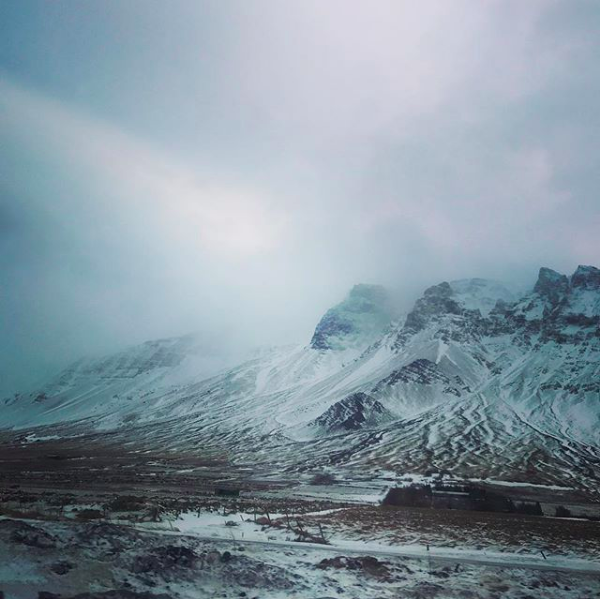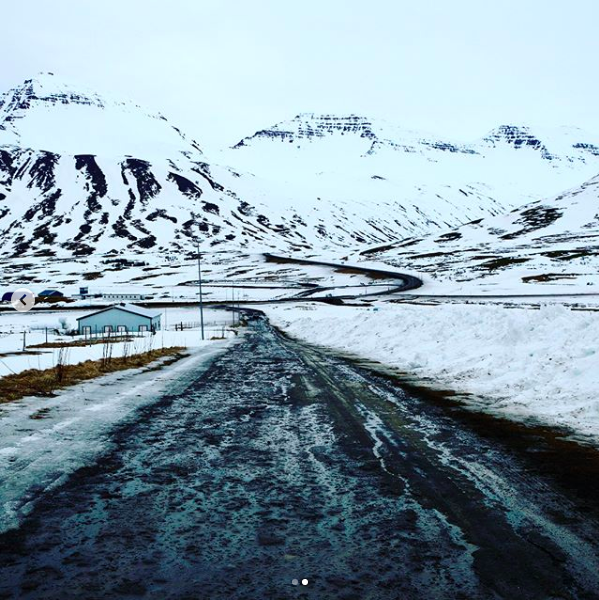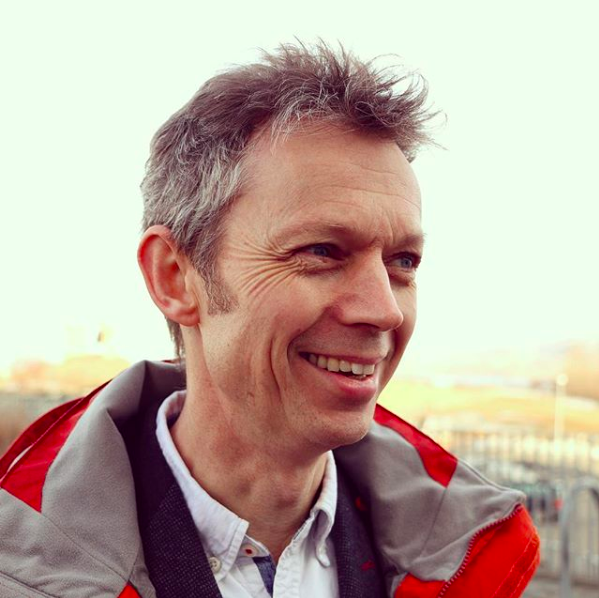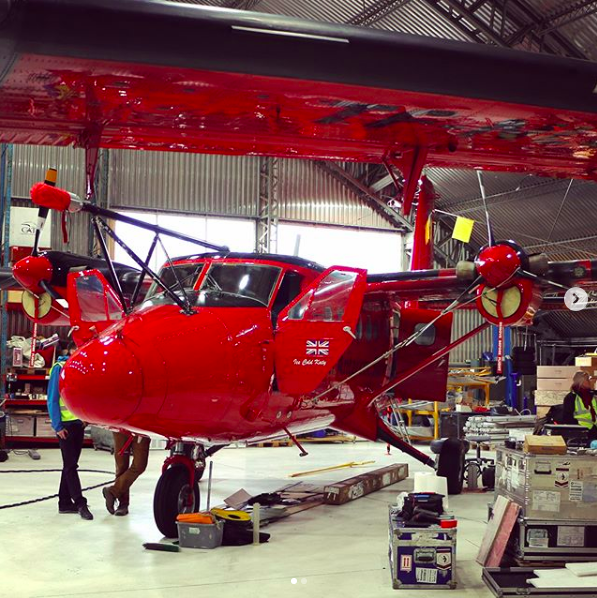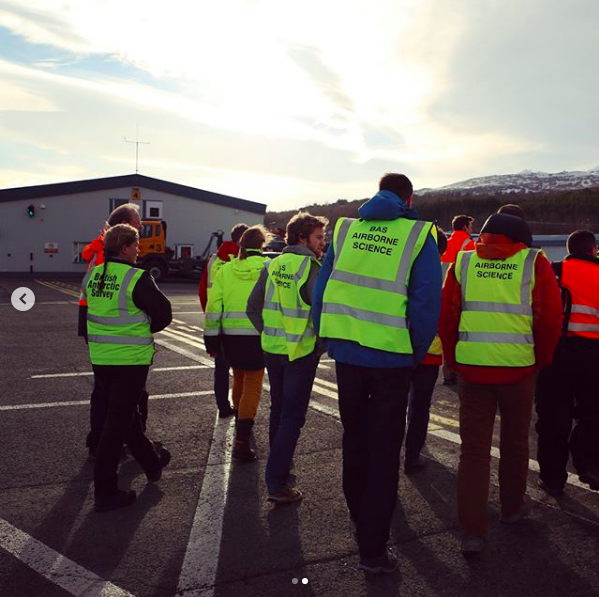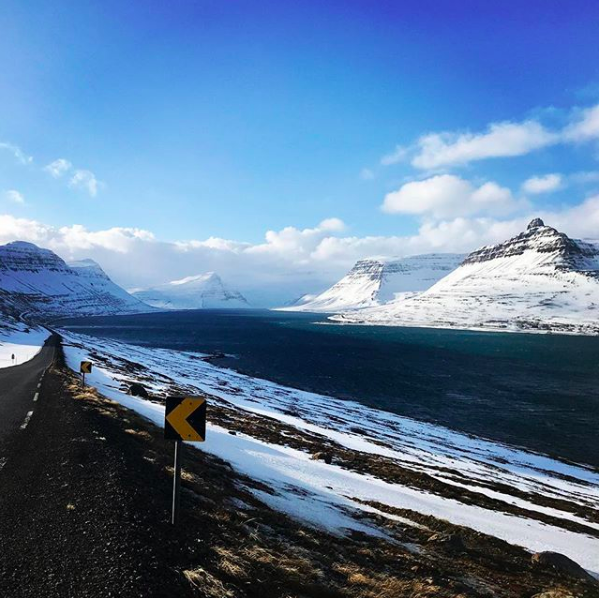"Welcome back," Iceland whispers through wind and wet snow as I touch down in the night. "You've decided to get to know me in the winter? Allow me to conjure a blizzard and cancel your domestic flight to Ísafjörður." "That's ok, I'll drive the 5-ish hours with colleagues and friends," I say, "through your frost, your fjords, your flurries." Iceland raises her icy eyebrow. A whiteout conceals her face. A tow truck pulls us from a snowbank. Night falls, and we arrive in Hólmavík, a town halfway to our destination. The journey continues tomorrow.
Join me as I report from Iceland—on a frigid ocean current crucial to the circulation of seawater and heat on our planet, and on a team transforming air into rock.
A cloud blows into me. The visibility drops and the Sun’s rays dim. The moist air reeks of sulphur. I clutch a hard hat to my head while the cold wind tries its best to blow it to the ground. The wind succeeds—five times. Pétur, my young guide from Reykjavik Energy, keeps chasing after it.
.
This is Hellisheiði, the geothermal plant that powers more than half of Iceland.
.
About 15 miles southeast of the capital, a cluster of machinery and pipes perch atop a simmering inferno. Roughly a mile down, a fissure serves as an escape hatch for scalding, pressurized water heated by the Earth’s interior. A well taps that fluid, bringing it to the surface where the resulting steam drives a set of massive turbines, flooding the power grid with a surge of electrons that fuel the toasters and televisions for tens of thousands. Hot water flows into Reykjavik, heating homes and sidewalks (to melt snow and ice).
.
Inside that billowing cloud, a few paces from me, stands a structure that acts as a giant shower, sprinkling water down onto the gases released by the power plant. Carbon dioxide and hydrogen sulfide dissolve in the water, forming a surging soda stream that courses to another part of the facility where it’s pumped back into the Earth. Within just a couple of years, the CO2 reacts with the deep basalt and is converted into stone. That’s right—the greenhouse gas becomes locked up as rock for millions of years.
.
The R&D team at Reykjavik Energy admits this is only part of the solution we need to deal with the growing concentration of CO2 in the atmosphere. They’ve partnered with a group called Clime Works in Austria that’s working to filter the gas out of the air so it can be pumped into greenhouses or carbonated sodas or, in a place like Hellisheiði, into the ground. Trap it in the rock and remove it from circulation, they say—which is better than the even more petrifying alternative.
Grabbed a bus on the afternoon of February 27 to Siglufjörður—a fishing village about an hour's drive up the fjord. Went on a lengthy amble about town, the icy snow crunching beneath my feet. Smelled the manure before spotting the horses, each one peering at me through a shaggy mane. Wandered down to the only road out of town and hitchhiked all the way back.
.
Christiana, an older woman who drove me most of the way—who was heading to the big city to catch a play with her mom (The Complete Works of William Shakespeare (Abridged), in Icelandic), who got those tickets as a gift for all her volunteer work with the local branch of the Red Cross, who actually does a lot of volunteering ever since she hurt her back and can't really work as she once did—told me that Icelandic horses are special. Mostly because they can carry a rider more steadily and smoothly than other breeds. Plus they've got a double coat that keeps them warm no matter what Iceland throws down at them from the sky. These horses run like the wind through the wind.
.
She also tells me that her two boys don't live nearby anymore. One's in Rekyjavik. The other's abroad because, unlike the horses, he can't stand the cold. So he moved to Denmark. Not exactly tropical, but apparently more agreeable than Iceland.
.
Christiana lets me deposit my apple core in her ashtray. She drops me off in front of my door. I tell her to enjoy the show. She tells me to enjoy Iceland. She was right—such a steady and smooth ride.
Ian Renfrew says riding in a little plane 50-100 feet above the ocean, inside a storm, is exhilarating. It snaps to life all the numbers and figures he spends the rest of the year poring over on his computer screen. It’s on these flights when the weather gets real, and a term like heat flux becomes an embodied experience, felt when a thrust of warm air pushes into the plane suddenly from below. Or a word like turbulence sends shudders along the body of the aircraft, rattling windows and molars.
.
This is when you can feel the ocean and the atmosphere talking to each other—the one throwing up sea spray and warmth, the other converting it into cloud and fog. The “talking” is ferocious—a high drama staged and shouted on the high seas, waves thrusting into the air, the air blowing wildly back at the water. Dizzying rain and vertiginous sleet whipped into a frenzy.
.
And in the midst of all that meteorological mayhem, a small cherry plane bumps along, holding its course, slurping up data. Those numbers, regarded comfortably on Renfrew’s computer screen in the days and months to come, will paint a portrait of the sloppy, soggy kiss of water and wind. It’ll tell him whether these storms, called cold air outbreaks, are responsible for cooling down the surface layer of the ocean and making it denser. That water, transformed, will have no choice but to sink. And the thing Renfrew and his colleagues are really after is whether this water goes on to supply a crucial deep artery of the ocean’s circulatory system. We need to figure this out, so that as the climate and the Earth continue to change before our eyes, we can anticipate what an alteration to the ocean’s circulation would mean. Dramatic changes in weather, no doubt. Major impacts on civilization, no question.
.
And so when the right storm descends upon the sea, Renfrew flies into its heart. The plane shudders and bounces, a choppy reminder of just how turbulent our future might be.
Flying on a Twin Otter aircraft in the Arctic is no joke. A box of survival equipment will last you five days on land, seven if you’re lucky. Splash down in the polar *ocean*, and this team of atmospheric scientists is going to need a covered life raft (seats four uncomfortably). The aircraft is also packed with flares, personal locator beacons, two Halon fire extinguishers, and a lithium battery fire containment bag (which doesn’t run cheap). Anytime anyone boards the plane, they’ll be wearing a fluorescent immersion suit with rubber seals at the neck, wrists, and ankles. It shouldn’t come to any of this, but it’s better to be prepared.
.
Five minutes before the plane descends to fly just 50 feet above the ocean’s surface—in the middle of a raging storm, mind you—everyone pulls a life jacket on over their immersion suit. And that’s when the sensors bolted to the wings, fuselage, and nose cone will start streaming in the really interesting stuff. They’ll taste the air, drink up the cloud, and register the very turbulence rocking and roiling the Twin Otter.
.
It’ll go on like this for hours. A little red plane bouncing just above an angry sea, pushed about by gusty, muscular wind.
Beside the Galdur restaurant (which doubles as the Museum of Icelandic Sorcery and Witchcraft), a huddle of fishing boats rock in the wind. Our stomachs filled with sea soup and croissants, we set out again. The possibility of completing our trip twinkles in the morning light. At the top of the hill near where we spun out yesterday, we make a pit stop, transfixed. The snow rests on the hillsides like soft pillows stitched with brown grass. We’re standing on an asphalt seam in the middle of a queen snow bed. We wiggle our way from fjord to fjord, each turn revealing a treasure of a view. Later, we spot a dozen seals splashing in the water licking one of the fjords. The wind pushes into our backs with unrelenting ferocity. Inside the roar, I hear the words, “You. Shall. Pass.”
To see more photographs from Ari Daniel's trip to Iceland and his other reporting projects, go to his Instagram @mesoplodon_.
